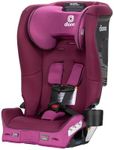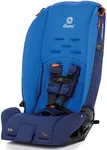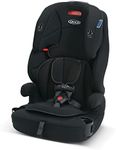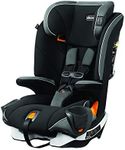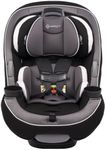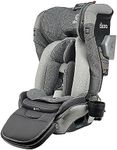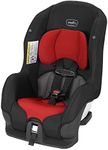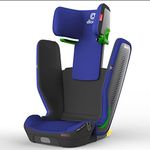Buying Guide for the Best Car Seat For 4 Year Olds
Choosing a car seat for a 4-year-old is an important decision for your child's safety and comfort during travel. At this age, children are typically transitioning from toddler seats to booster seats, but it's crucial to select a seat that matches their size, weight, and developmental needs. Always ensure the car seat meets current safety standards and is compatible with your vehicle. Think about how easy it is to install, adjust, and clean, as well as how comfortable your child will be on both short and long trips.Type of Car SeatThe type of car seat refers to whether it is a forward-facing seat with a harness, a combination seat, or a booster seat. For most 4-year-olds, a forward-facing seat with a 5-point harness is recommended until they reach the maximum height or weight limit for that seat. Booster seats are suitable for older or larger children who have outgrown harnessed seats. Choosing the right type depends on your child's size and maturity—if your child still fits in a harnessed seat, it's safest to keep them in it as long as possible before moving to a booster.
Weight and Height LimitsWeight and height limits indicate the minimum and maximum size a child can be to safely use the seat. These limits are important because using a seat outside of its recommended range can compromise safety. Car seats for 4-year-olds often have upper weight limits between 40 and 65 pounds and height limits that vary by model. To pick the right one, measure your child's current weight and height and choose a seat that allows for growth, so you don't have to replace it too soon.
Harness SystemThe harness system is the set of straps that secure your child in the seat. A 5-point harness, which has straps over both shoulders, both hips, and between the legs, is considered the safest for young children. Some seats allow you to switch from a harness to a seatbelt as your child grows. For a 4-year-old, a 5-point harness is usually best, especially if your child is active or tends to move around a lot in the car.
Ease of InstallationEase of installation refers to how simple it is to securely fit the car seat in your vehicle. Some seats use the LATCH system (Lower Anchors and Tethers for Children), while others rely on the vehicle's seatbelt. A seat that's easy to install correctly is crucial for safety, as improper installation can reduce protection in a crash. Look for seats with clear instructions and features that help you get a tight, secure fit. If you plan to move the seat between cars, consider how quickly and easily you can reinstall it.
Adjustability and ComfortAdjustability and comfort cover features like adjustable headrests, reclining positions, and padded seats. These features help the seat grow with your child and keep them comfortable on longer rides. Some seats offer multiple harness heights and recline angles, which can be helpful if your child naps in the car. Choose a seat that can be easily adjusted as your child grows and that provides enough padding and support for comfort.
Safety FeaturesSafety features include things like side-impact protection, energy-absorbing foam, and reinforced frames. These features are designed to provide extra protection in the event of a crash. While all car seats sold must meet minimum safety standards, some offer additional features for enhanced safety. Consider your peace of mind and your driving environment—if you do a lot of highway driving or live in an area with heavy traffic, extra safety features may be worth considering.
Ease of CleaningEase of cleaning refers to how simple it is to remove and wash the seat cover and harness. Kids can be messy, so a seat with a machine-washable cover or wipeable surfaces can save you time and effort. If your child eats or drinks in the car, or if you want to keep the seat looking new, look for one with easily removable and washable parts.
